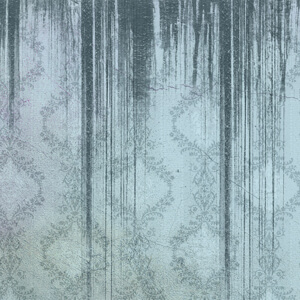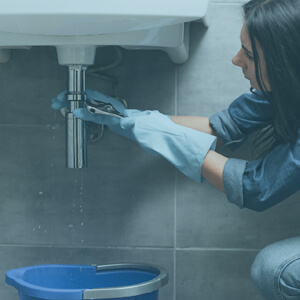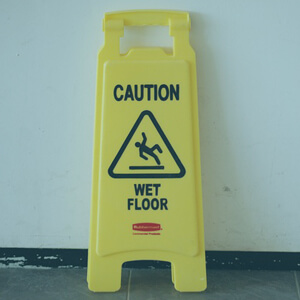The aftermath experienced as the result of an unexpected water loss can be painfully brutal. Not only do water loss events have the propensity to destroy homes and establishments, but they can also render devastating consequences on human health.
Consequently, when water emergencies arise, it is crucial to know who to call. With prompt involvement of a remedial expert, you can aid in putting a stop to the negative effects that often follow water loss.
Four Classes of Water Loss
Water loss events can be divided up into four major classifications. Each classification refers to the amount of material and surface area affected, and includes flooring, ceilings and walls. Restorers use this information in conjunction with the evaporation rate of each to best determine how much, and what kind, of drying equipment should be utilized for an effective and resourceful dry that saves time, money, energy and effort.
Beginning with Class 1, these water loss events involve less than 5% of waterlogged porous materials, including carpet and padding. These remedial cases tend to have a low rate of evaporation, primarily because there is very little water present within the structure. Low-porous materials, such as wall boards, concrete and plywood, are likely to have incurred minimal damage, if any at all.

Class 2 water losses involve 5%-40% of materials affected, including all walls, ceilings and flooring. These water losses often involve moisture wicking up drywall, no more than 24 inches. Similar to Class 1, low-porosity surfaces will be minimally impacted.
Class 3 water losses contain over 40% of water-impaired material, including all ceilings, walls and flooring, and have a higher rate of evaporation than the other two classes, due to a larger surface area having been affected. In these heavily saturated environments, moisture can be observed wicking over 24 inches up the wall. There is also a chance that the structural framing and insulation of the structure has been compromised.
The final class, Class 4, is often referred to as a specialty situation. These usually involve saturated low-porosity materials such as hardwood, concrete, plaster, brick and stone, and will require specialized equipment and creative processes to dry completely.
Risks and Safety Precautions
As one might expect, water damage often brings with it multiple concerns for the health and safety of individuals spending large amounts of time within the affected residence or establishment.
Besides wet flooring that can increase the risk for physical injury, comes countless other facets of safety that must be explored.

One chief concern for remedial experts pertains to the increase of microbial activity following a water loss event. When an environment is saturated with moisture, it becomes the perfect breeding ground for bacteria and fungi to develop. Overtime, microbial activity can multiply and eventually present serious, and even fatal, health hazards to all who occupy the impacted structure.
But it doesn’t stop there. In addition to unsafe mold and bacteria growth, comes the concern of what lurks within the water itself. From toilets to ground surface water, occupants should steer clear of coming into contact with water that comes from unsanitary or outside sources.

Categories of Water Loss
As previously mentioned, the type of water involved in a water loss scenario is of the utmost importance, as it has the potential to negatively impact the health and wellness of all who come in contact with it.
To aid in effective restoration, remediators often utilize a categorization system to identify water loss events according to the type of water involved.
- Category 1: Category 1 water loss events involve water that is “clean” by most standards. It contains little to no contaminants, such as water that comes from supply lines to appliances or fixtures. Unlike Category 2 and 3, Category 1 water losses have very few parameters in relation to how the remedial process should go. As such, these projects tend to be less extensive than the other two categories.
- Category 2: Category 2 water losses, on the other hand, do require adherence to specific protocol, as the water involved may involve contaminants. If carpet is affected, the padding will need to be removed and replaced with a new one, while the surface of the carpet may be cleaned, treated and dried. No drying-in-place methods can be utilized in such a scenario.
- Category 3: A Category 3 water loss will involve water that is heavily contaminated, and thus, must be handled with care. It will require effective and specific PPE, or personal protective equipment, and restorers will need to follow strict guidelines concerning the treatment of the affected structure.
Framing
In many cases, wooden framing elements, unless made of plywood or other traditional wood grains, are heavily engineered. The result is often a stronger and less expensive version of wood that has multiple functions.
The problem, however, comes when this type of “wood” incurs moisture.
Unfortunately, heavily manufactured wood, such as medium density fiberboard, is very susceptible to the effects of moisture. In fact, structural frameworks of this sort can become visibly impacted by water or excess moisture in the air, in as little as a few minutes.
As such, it is vastly important that those who believe their home or business has been negatively affected by water call a professional remediator quickly, to put an end to an issue that has the potential to become costly and dangerous down the road.
Drywall
Wet drywall, on the other hand, presents its own set of challenges.
When drywall becomes wet, its paper-like surface, made of wood pulp, can become a prime target for mold and bacteria. Additionally, drywall that has suspended overhead has the propensity to sag, or even cave in, when it becomes logged with water.
Flooring
Flooring is a special situation in terms of restoration, and must be handled on a case-by-case basis. Depending on the type of flooring affected, the amount of water that has permeated the structure and the category of water, each situation will be approached differently.
Nevertheless, water-impacted flooring can bring about a whole host of problems including buckling, cupping, crowning, wrinkling, bubbling, odd smells and more, and will require the help of a remedial professional to ensure effectual drying.
Water Remedial Solutions
Every water loss situation has its own distinct set of characteristics, and as such, the remedial plan that a restorative technician wishes to implement will likely flex depending on the need of the situation.
Nevertheless, the following is an example of the general course of action that a restoration team is likely to follow in order to effectively restore a home, building or structure back to its original state:

- Inspections and Readings – Before devising a plan of action, a remedial expert will first need to inspect the affected premises and take readings of moisture. During this process, the remedial team will use meters to detect dampened areas and will also take note of any pre-existing damage that occurred prior to the water event.
- Discard – Following the inspection process, restorers will rid the environment of items, objects and materials that are no longer salvageable. These items may be soaked or otherwise compromised by water, and will need to be discarded before the drying and sanitation process can ensue.
- Sanitation – Items and materials that remain may require antimicrobial treatments to stop the growth of fungi and bacteria. If this is to occur, always follow the directions of your restorer, as the process may involve you needing to leave the affected structure for an allotted amount of time.
- Drying – This is the final, and arguably, most important piece of the remedial process. Restorers will use their knowledge and expertise to determine drying techniques that are best suited for the impending situation. Drying techniques may involve natural or mechanical means, or a blend of both.
When Danger Present Itself, You Need to Act... Quickly!
When an unexpected water loss occurs, it is critical that you actively seek help, before it becomes too late. Waiting too long before confronting a water-impaired residence or structure can have irrevocable long-term consequences that could potentially affect your health, safety and immediate surroundings.
Our Services
- Biohazard Cleaning Services
- Blood Clean Up Services
- Crime Scene Cleanup Services
- Fire Restoration Services
- Hoarder House Cleaning Services
- Homeless Encampment Cleanup
- Infectious Disease Decontamination Services
- Fentanyl Decontamination
- Meth Lab Cleanup Services
- Mold Remediation Services
- Odor Remediation Services
- Water Damage Restoration
- Unattended Death Clean Up
- Suicide Cleanup
- Sewage Cleaning Services
- Rodent Cleanup Services

